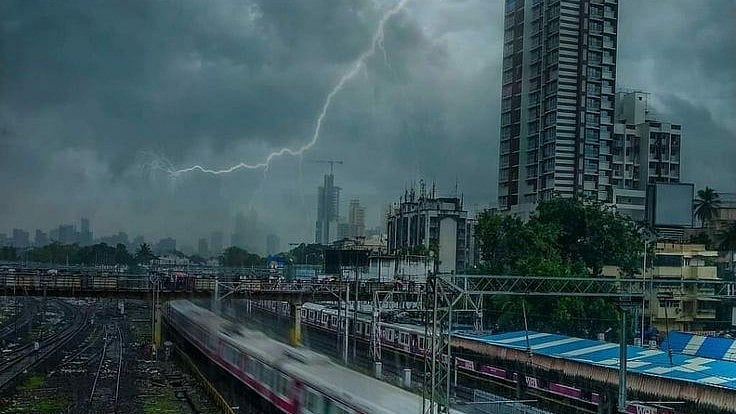Mumbai News: Why Are Maharashtra And Surrounding Regions Experiencing Unseasonal Rains In April? Explained | Pinterest
Mumbai: As April began, Mumbai encountered its first rain of the year unexpectedly, occurring well before the usual onset in early June. This unanticipated rainfall, which led to an orange alert for Maharashtra and adjacent states, coincided with peak temperatures and humidity levels. But what caused this sudden shift in weather?
According to the India Meteorological Department (IMD), light showers, thunderstorms, and gusty winds are forecasted for Mumbai and its neighboring districts over the next few days, providing a welcome respite from the persistent summer heat. Although no prior alerts were in effect for Mumbai, a yellow alert has now been issued for several districts in Maharashtra, including Thane and Raigad. This comes as the state received an orange alert due to the impending weather changes.
What Is Trough? How Is It Causing Rains In Mumbai?
The reason for the anticipated rainfall in Mumbai and surrounding areas can be attributed to a weather system known as a trough. This trough extends from interior Odisha to Kanniyakumari and is currently positioned from south Chhattisgarh to north interior Tamil Nadu. This meteorological feature is facilitating the interaction of easterly and westerly winds at a height of approximately 0.9 km above the ground level over Maharashtra and Karnataka, which is fostering conditions conducive to rain.
Rains In Mumbai And Other Regions
While the anticipated rainfall intensity will differ across various areas, Mumbai is expected to experience light showers predominantly during the afternoons or evenings. In contrast, its neighboring districts such as Thane, Palghar, and Raigad are predicted to face more severe weather, including thunderstorms, lightning, moderate rainfall, and gusty winds reaching speeds of 30-40 kmph in isolated spots.
Weather Experts
Mahesh Palaway from Skymet Weather Services indicated that the trough would significantly influence the region’s rainfall, albeit with patchy and light showers in Mumbai itself. On the other hand, areas like Pune and parts of interior Maharashtra are projected to witness much heavier rainfall. Thus, while the rains may offer some relief to Mumbai, neighboring regions could experience a more substantial deluge, according to reports by Indian Express.
Unseasonal Rains Not News To Mumbai
Mumbai experiences unseasonal rainfall during March and April, according to meteorologists. Previous data shows that brief spells of rain have occurred in March and April in past years. For instance, Santacruz station recorded its highest March rainfall in 2023 with 17.1 mm on March 21, followed by 10 mm in 2016 and 13 mm in 2015. In April, 2023 marked the wettest day on record for the month, with 14.8 mm of rain.
No Relief From Humidity Despite Rains
While rain in March and April is not unusual for Mumbai, the permanence of the cooler temperatures is not guaranteed, with expectations of heat returning after the passing of the pre-monsoon system. Understanding this seasonal weather behavior is key for residents as they prepare for the transition towards the monsoon.
Typically, Mumbai sees insignificant pre-monsoon showers leading up to the monsoon season, which officially begins between June 9-11. These early rains serve as a precursor to the main monsoon, with trace amounts often collected between April and May.
In terms of temperature, the pre-monsoon showers are expected to provide a temporary drop, with maximum temperatures predicted at around 32 degrees Celsius after April 2. This represents a noticeable decline from the highs of 36 degrees Celsius, which were approximately three degrees above normal recently.
